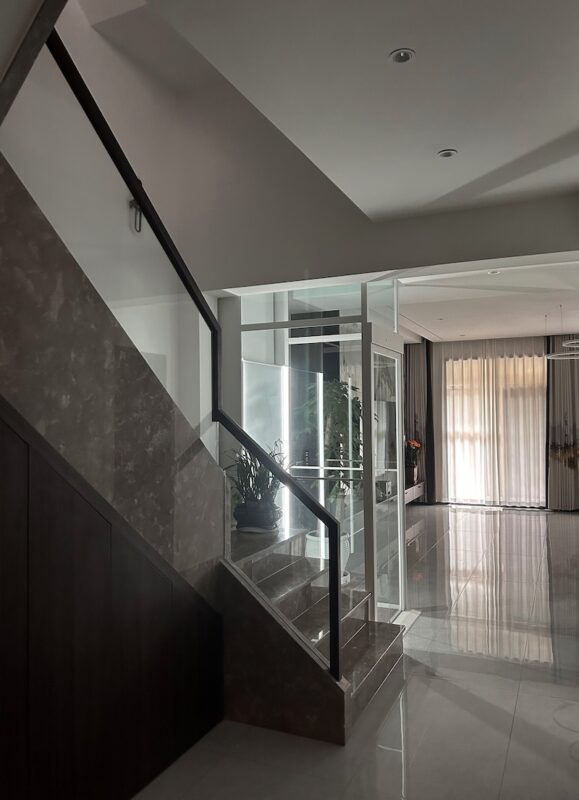
Imagine this. Your father used to climb stairs two at a time. These days, even a single step feels like a mountain. Or maybe you’re redesigning your forever home. One that should be as elegant as it is functional. A home where aging gracefully doesn’t mean giving up the upper floor. That’s where single-floor elevators steps in—not as luxury add-ons but as thoughtful, practical solutions for real-life needs.
In Indian cities where villas and duplex homes are being reimagined with accessibility in mind, the demand for compact, stylish, and reliable lifts has quietly surged. Homeowners are no longer waiting for mobility issues to arise. They’re planning. They’re elevating daily life—literally.
So, is a one-floor lift right for you? This guide walks you through exactly that. No fluff, just real answers built for real homes like yours.
What Is a One-Floor Lift?
Let’s clarify: when we say “one-floor lift,” we’re not discussing the industrial elevator tucked in a commercial tower. We’re talking about sleek, space-savvy systems that move you effortlessly from your ground floor to your first. Or from your living room up to that dreamy rooftop terrace.
A one-floor lift is a personal vertical transportation system connecting two adjacent levels. Think of it as your private, stylish mini-lift designed just for your home.
You’ll find them in modern duplexes, penthouses with mezzanine spaces, or homes with recreational rooftops. They’re perfect for homes that don’t need full vertical travel across three or more floors. But still need that essential daily lift.
What makes them stand out? First, the footprint is compact enough to fit into corners or even closets. Then there’s the affordability, both upfront and in ongoing energy use. Last but not least, there is low disruption. Many of these lifts don’t need deep pits, complex shafts, or heavy-duty structural changes.
Who Should Consider a One-Floor Lift?
You might not think who “needs” a lift. It’s time to rethink.
Are your parents visiting more often? Do you catch them hesitating at the stairs?
Have you or someone in your family recently had surgery and needs help getting upstairs without stress?
Or maybe you’re just thinking long-term. What happens when stairs aren’t so friendly anymore?
A single floor elevator offers not just comfort but dignity. It allows seniors to move independently. It gives post-op patients peace of mind. And for families with toddlers or aging pets. Yes, them too. It’s an unexpected relief.
But functionality doesn’t mean boring. Many homeowners today choose lifts as much for their design value as for practicality. A glass shaft lit with soft LEDs can become a centerpiece. A custom-finished control panel might complement your modern interiors. Just like a piece of art. You don’t have to choose between elegance and accessibility. With brands like SWIFT Lifts. You get both.
Key Features to Look for in a One-Floor Lift
Not all lifts are created equal. Especially when they’re going into a home.
- Compact Design: Space is premium, especially in urban homes. Look for models that require minimal shaft space. Some, like SWIFT’s more refined units, can even be installed without needing a pit or machine room.
- Smooth & Quiet Operation: You don’t want your home to sound like a metro station. A good lift should glide, not groan. The right engineering—low-friction systems, enclosed motors, and thoughtful design. It makes all the difference.
- Safety, Always: This one’s non-negotiable. Emergency stops. Automatic brakes. Battery backup in case of power cuts. Child locks if little explorers are around. These features might seem standard, but in some models, they’re optional. Don’t compromise.
- Energy Efficiency: You’d be surprised how little power some home lifts consume. Our battery-operated systems, for example, use as little power as a kitchen appliance. Bonus? Some systems even recharge during descent.
- Aesthetic Flexibility: Why shouldn’t your lift look as good as the rest of your home? From panoramic glass walls to minimalist Scandinavian panels. Today’s best lifts are customizable to the smallest detail. Whether you love bold textures or subtle sophistication. There’s a finish for every mood board.
- Smart Features: Touchscreens, app connectivity, voice activation. Your home lift can be as smart as the rest of your house. Want to send the lift up with your phone? It’s possible. Want to turn it off when you’re away? Also possible.
Types of One-Floor Home Lifts
Let’s break down the most popular types. Each is suited for different needs and budgets:
- Hydraulic Lifts: Ideal for limited space. They are known for their whisper-quiet operation. They use fluid mechanics to move smoothly. It can be integrated with minimal fuss. Perfect for homes with aesthetic sensitivity and structural constraints.
- Traction Lifts: Think smooth rides with less energy use. These use counterweights and ropes. Their movements are fluid, and their energy bills are lighter.
- Screw and Nut Driven Lifts: Reliable, safe, and often easier to maintain. These systems are self-supporting. They don’t always need external shafts or rooms. Great for quick installations or retrofits.
- Customized Lifts for Home: Here’s where functionality meets flair. Custom lifts give you control over form and function, whether it’s a specific color palette, material finish, or even how the doors open. With brands like SWIFT, personalization doesn’t mean compromise. It means you get safety, performance, and beauty. All in one neat package.
Installation & Cost Considerations
This might be the part you’ve been waiting for. How much time and money are we talking about?
- Installation Time: Most one-floor lifts can be installed within 2 to 4 days. Faster if the space is prepped. This isn’t a weeks-long construction headache. It’s closer to a well-managed appliance installation.
- Civil Work Requirements: Some lifts need minor adjustments—maybe a shallow pit or a reinforced floor. But many models today, especially compact ones, are designed for minimal civil disruption. SWIFT’s systems often come with self-contained shafts, reducing on-site modifications drastically.
- Cost Range: Pricing varies based on type, materials, features, and customization. While screw-driven or hydraulic models might start in the lower lakh range, high-end designer lifts can cost more. But remember. You’re not just buying mobility. You’re investing in independence, future-readiness, and home value.
- Maintenance: It’s not a set-it-and-forget-it device. Annual servicing is recommended. The good news? Brands like SWIFT offer remote diagnostics and support, minimizing service downtime. Spare parts? Readily available. Warranties? Often included with options to extend.
Conclusion
So, is a single-floor elevator worth it?
If you’re planning for a more accessible, comfortable future—or just want to move through your home easily and elegantly. The answer might be yes. More than just hardware, it’s peace of mind packaged in smart design.
Modern lifts are no longer intrusive, noisy, or clunky. They’re personalized, efficient, and built for homes that value style and function equally. Whether building your dream home or upgrading the one you love, a one-floor lift might just be the smartest step up.
And if you’re looking for a brand that balances innovation with aesthetics, simplicity with safety. SWIFT Lifts should be at the top of your list. After all, a home that moves with you? That’s future living today.
Frequently Asked Questions:
Even if your home doesn’t have sprawling hallways or a built-in shaft, there’s likely a one-floor lift that fits. Compact models—like those offered by SWIFT. They can slot into corners, closets, or along stairwells with minimal structural changes. No pit? No problem. Self-contained designs work beautifully in tight spaces.
Most residential lifts support 250–400 kg, easily accommodating wheelchairs, walking aids, or two people. Need something more specific? SWIFT Pro offers flexibility with capacity options tailored for mobility equipment.
You’ll get more than just a stop button. Think battery backup for power cuts, dual safety brakes, child locks, emergency alarms, and anti-entrapment tech. SWIFT models even offer remote diagnostics. Because real safety means being ready for the unexpected.
Forget complex wiring or three-phase nightmares. Many modern lifts run on a standard home power line. As for civil work? Some models need only a shallow base—no deep pits, no machine rooms. SWIFT’s setups are especially gentle on your walls and wallet.
Regular checkups, part replacements, and software updates. These are usually part of the plan. Brands like SWIFT offer annual service packages with warranty extensions and even remote support for instant troubleshooting. You stay covered. Your lift stays smooth.
Get in Touch!










